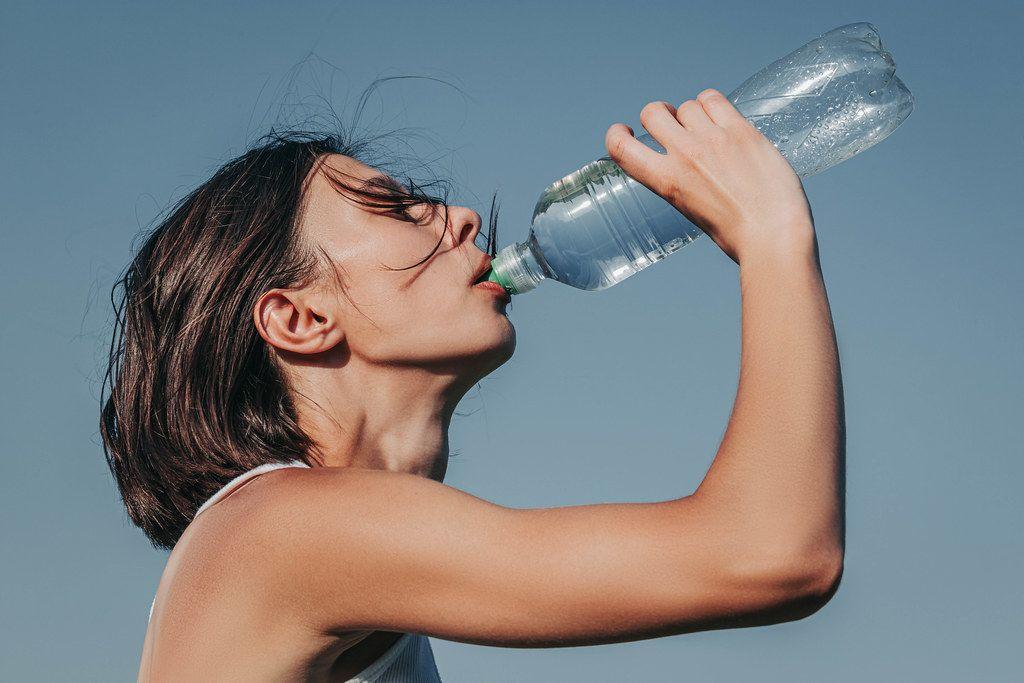Drinking clean water is the most important thing you can do for your body.
Water does more than quench your thirst. Drinking the recommended amount of water daily helps your body optimally function. It provides several vital functions such as protecting organs and body tissue.Â
Water lubricates the eyes, nose, and mouth. It enhances digestion, circulation, immunity, and brain function. You lose water every day through waste, breathing, and perspiring. So how do you know how much water you should be drinking?Â
“Water is important for every cell in the body to function properly,†said Liana Reiland, D.N.P. of The Mayo Clinic. “The digestive system functions better with adequate hydration, preventing constipation. Water also helps flush toxins from the body, promotes good kidney function, keeps your joints and muscles lubricated.â€Â
Women need about 11½ cups, and men should consume 15½ cups per day. There are several ways to step up your intake of water. Taking a filled reusable water bottle with you wherever you go is a great habit to get into. Eating a lot of fruits and vegetables can enhance hydration. Drinking water with every meal, and switching out sodas for water from time to time, increases intake.
The FDA identifies four categories of safe bottled drinking water:Â
- Artesian well water originating from aquifers.
- Mineral water coming from an underground source that contains minerals and trace elements.
- Spring water collected from a spring through a borehole.
- Well water coming from a hole tapped into an aquifer.
Bottled water can also originate from city water using a distillation process, reverse osmosis, filters, or ozonation and is considered purified.
According to the city of San Luis Obispo, city water meets all state and federal safe drinking water requirements. Fluoride is added to aid in dental health. However, individual home tap water can contain lead from lead pipes. Some private homes still rely on wells for their water.Â
In 2019, the San Luis Tribune reported that the State Water Resources Control Board tested water wells in California. During that testing, they found firefighting foam chemicals and other toxic substances. These chemicals are called forever chemicals because they are toxic and can remain in the body.
Reusing water bottles is ecologically responsible and makes it easier than ever to stay hydrated. They come in a wide variety of shapes, styles, colors, and are made of different materials.
Helen Carefoot, in a Washington Post article, provided insight as to the differences in choices. Here are some ideas for choosing safe water containers that are FDA approved:
- Plastic can contain high-density polyethylene (HDPE). These bottles should be washed by hand as a dishwasher can break down the material. Note that polycarbonate polyethylene terephthalate (PET) plastic, which bears a #1 code is not recommended for reuse. The material can break down allowing bacteria to build up.
- Glass is heavier than other materials, does not allow the leaching of chemicals, but the downside is that it is breakable.
- Stainless steel metal water bottles are a good choice but check that the lining is not plastic, epoxy, or resin. Aluminum carries a slight risk of leaching aluminum into the water.Â

Any water bottle that is left in direct sunlight or heat can be susceptible to algae and mold. Store bottled water at room temperature or in a cool location, and never in a hot car. Avoid storing water near cleaning products or other chemicals.
If you are not a big fan of water-guzzling throughout the day, try green tea, mint tea, black coffee, juices, or even smoothies to fulfill water requirements. Other choices are fruit or citrus-infused water, unsweetened teas, and low sodium broths.





















